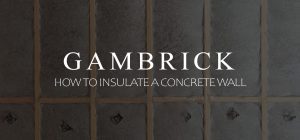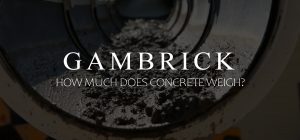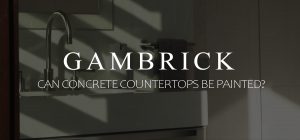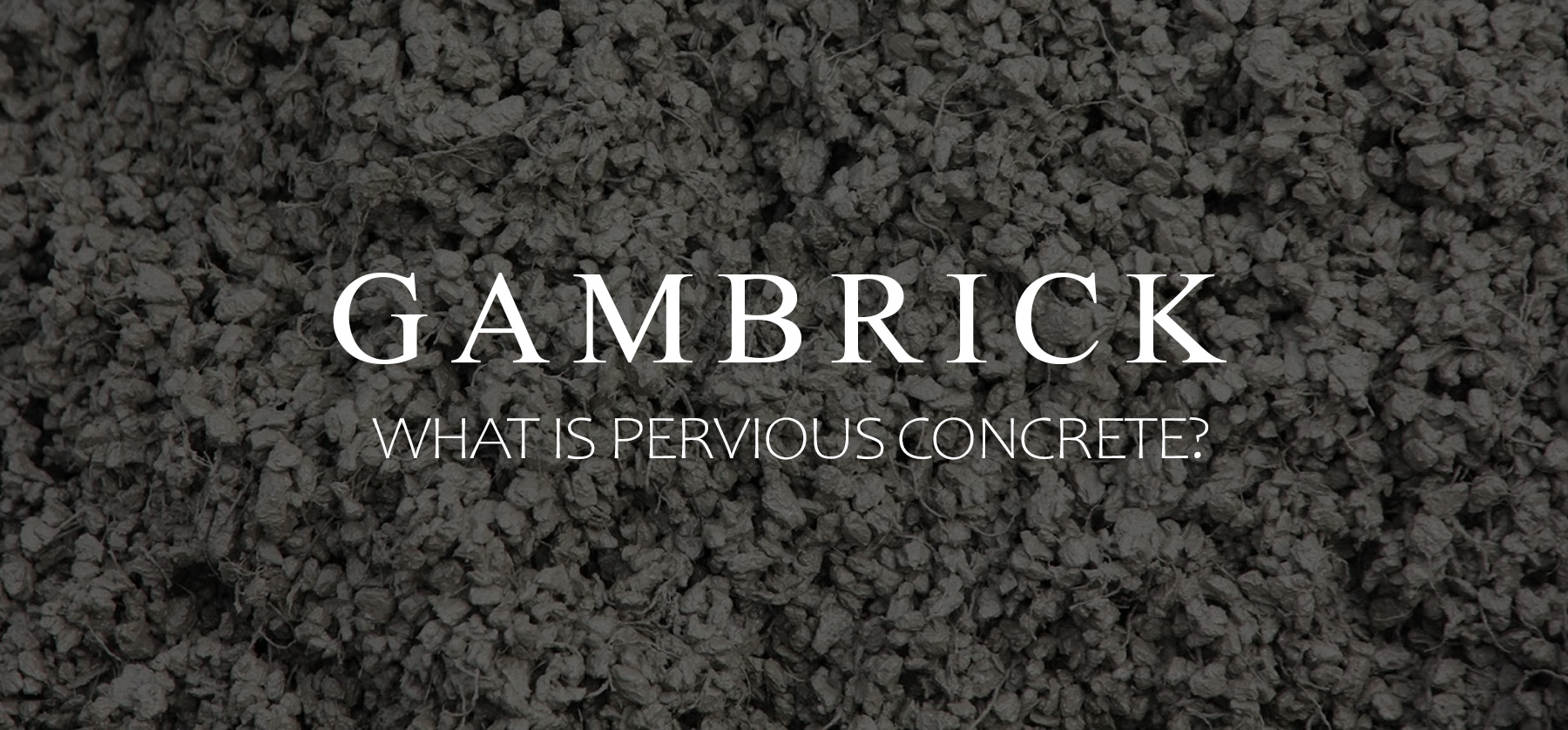
What Is Pervious Concrete?
Pervious concrete is just like regular structural concrete pavement except that it contains 15% to 35% of open space. Most standard concrete is less than 2% open space. This allows pervious concrete to drain water much easier than a regular solid concrete slab. Like traditional concrete, its made by mixing cement and stone with water. However, it contains little to no sand. The result in a very porous open-cell structure that allows water to drain through.
Pervious concrete is used for paving and not structural applications like footings and foundations. This is because all those open voids reduce the compressive strength of concrete. However it’s still strong enough to be used as pavement.
Regular concrete absorbs water because its very porous. But pervious concrete doesn’t absorb as much water because it drains through. Less water absorption and lots of open space makes pervious concrete lighter.
Pervious concrete can take in storm-water at a rate of 3 to 8 gallons per minute per square foot of surface area. This is much higher than black top or solid concrete and exceeds the flow rate needed to prevent runoff from heavy rain. In areas prone to flooding or with poor drainage, pervious concrete can be a huge benefit.
Rainwater that drains through the concrete can percolate into the underlying soil or be diverted away with pipes or gravel. Because the pavement acts as a water collection area, it helps prevent much of the polluted runoff that normally occurs with impervious pavements like tar or concrete roadways.
When water is run through pervious concrete it acts as a filtering process. As the water makes its way through the cell structure of the pavement, aerobic bacteria inside the voids help break down pollutants and chemicals. This can help purify water before it enters the soil.
Pervious Vs Regular Concrete
Both pervious concrete and regular concrete are a mixture of cement and stone mixed with water. However regular concrete also includes sand.
Because regular concrete includes sand, which is an aggregate like stone, it hardens much thicker with almost no voids. This creates a stronger more solid structure. When water hits traditional concrete, some absorbs but most runs off. Water doesn’t drain through solid concrete unless it has cracks.
Pervious concrete doesn’t contain sand so when it hardens there are lots of voids within the structure. In fact, 15% – 35% of a pervious concrete structure can be air.
There are lots of open areas running through the concrete like tunnels. These voids allow water to drain right through the structure and down into the soil.
A pervious concrete mix ratio contains little to no sand which creates in a high void content. Using enough cement paste to coat and bind the stone together creates a system of highly permeable voids that drains quickly.
The flow rate for water running through pervious concrete is generally around 3 – 8 gallons per minute per square foot of surface area. For comparison, traditional concrete drains around 0 gallons per minute per square foot.
The drawback is weaker concrete with a lower compressive strength. This makes it too weak to use as a footing or foundation material but still strong enough for a roadway.
The best concrete mix for a driveway usually contains sand, but pervious mixes can occasionally be better if the property has drainage issues.
Pervious concrete is poured with zero slump and a very low water-to-cement ratio so experience working with it is very important. It doesn’t spread or finish like traditional concrete.

What Is Pervious Concrete Made Of?
Pervious concrete is made of cement and stone mixed with water. And unlike traditional concrete it contains little to no sand.
Adding sand to the mix increases the concrete’s strength but reduces the voids.
The mixture has a water-to-cement ratio of 0.28 to 0.40 with a void content of 15% to 35%. Its poured with zero slump and a very low water-to-cement ratio. This makes it harder to work with and pour when compared to regular concrete. Without much water it doesn’t flow easily and requires more work to finish.
Appearance
Pervious concrete looks different than regular concrete. Because there’s no sand and a lot less water, it dries more porous and less smooth. The finish looks rocky with visible stones and its color can vary.
The finish is a little different too. Instead of a smooth surface or a broom finish, the surface it rocky and textured.
Pervious concrete can not be stamped. Because there’s no sand and a lot less water the concrete won’t retain a stamps texture. However it will retain some of the stamps shape.
Borders and decorative inlays can be used.
Overall the appearance isn’t as smooth or modern as traditional concrete.
What Is Pervious Concrete Used For?
Pervious concrete can be used for a few different things but its main use is for pavement. Generally its uses do not include structural applications because it’s weaker than regular concrete.
The reason why pervious concrete is used primarily as a road material is due to how well it drains water. Its extremely high amount of pores and voids allows water to drain right through it which is a huge benefit for a road, driveway or parking lot.
Since water can drain through the roads surface you don’t need to spend as much money on expensive storm-water management systems, drains and pipes.
Pervious concrete is also referred to as porous concrete or permeable concrete. Porous refers to the extremely high amount of pores running through it and permeable refers to its ability to permeate (drain) water.
Pervious concrete is a great way to address environmental issues caused by pollution running of roadways. By allowing storm-water to seep into the ground, storm-water runoff is reduced and groundwater levels can be replenished naturally.
Pervious concrete paved roads creates a more efficient land use by eliminating retention ponds, drains, pipes, and other storm-water management systems.
Because so many costly drainage systems are eliminated, overall project costs can be greatly reduced.
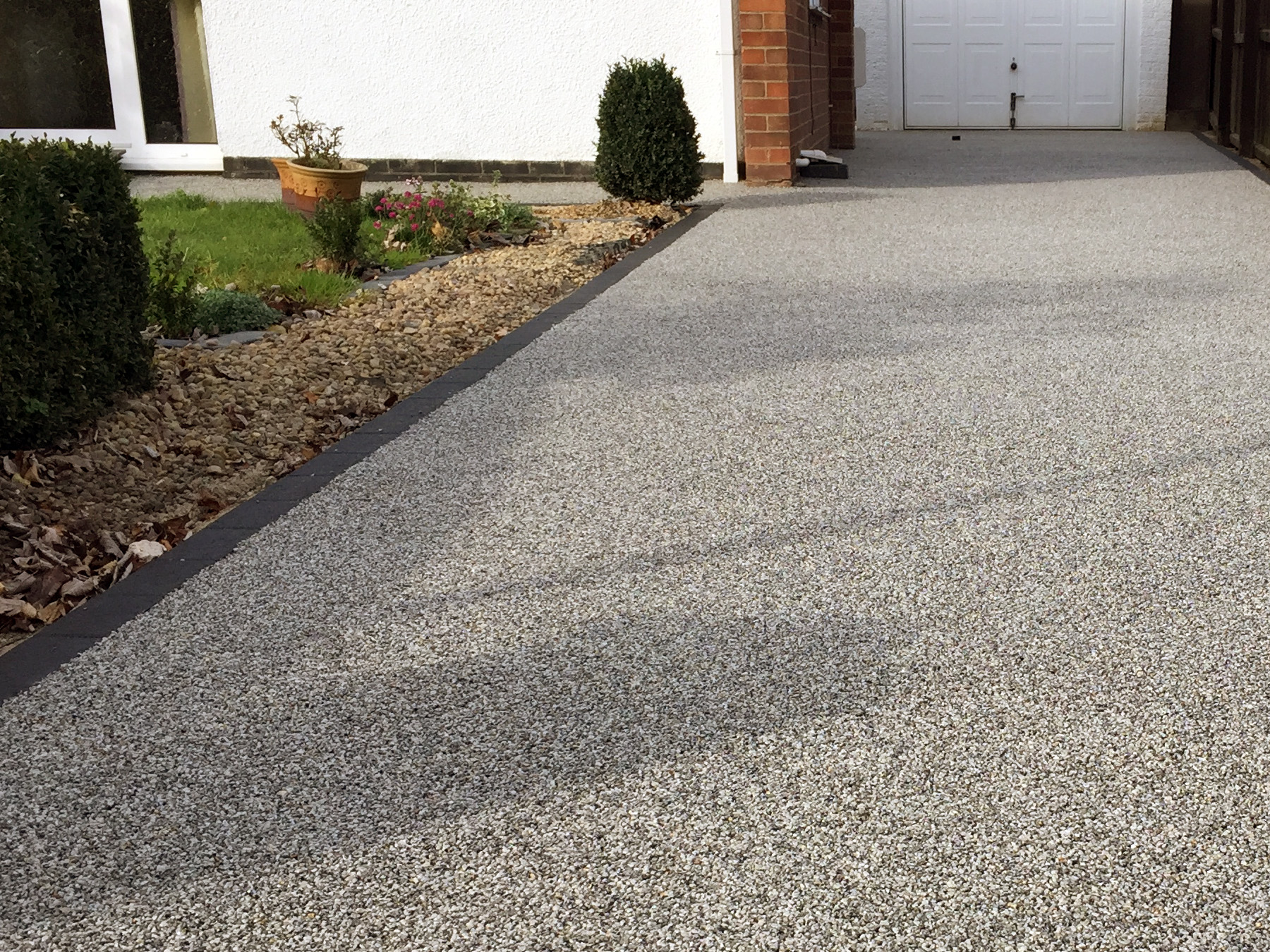
Environmental Benefits Of Pervious Concrete
Stormwater runoff is a large source of the pollutants entering our waterways. According to the E.P.A., about 90% of surface pollutants are carried by the initial 1-1/2 inch of rainfall. Water that isn’t carried to treatment facilities by storm drains ends up in local bodies of water instead.
This can increase water pollution, algae growth and harm aquatic life. And making this dirty water drinkable requires very expensive treatments.
The biggest pollutants in urban runoff are:
- Sediment including dirt and debris.
- Heavy metals from brake lines.
- Hydrocarbons from cars and trucks dripping oil onto the pavement and asphalt.
Studies have shown that 90% to 95% of the hydrocarbons found in urban runoff comes from the binders and sealers used with asphalt pavements.
To address these pollution concerns, the E.P.A. along with many local and regional authorities are passing environmental regulations that require tougher storm-water management. Pervious concrete is one solution that can help address the issues.
How Pervious Concrete Can Help The Environment
Here are some of the reasons why pervious concrete pavement can help the environment:
- Reduces runoff into storm sewers.
- Helps maintain aquifer levels.
- Channel water where you need it to reduce irrigation.
- Lower the amount of pollutants making there way into the water system.
- Reduce hydrocarbon pollution from asphalt pavements.
Pervious concrete pavements can also help reduce heat levels caused by black top. Because they’re lighter in color with an open-cell structure, pervious concrete pavement doesn’t absorb and store as much heat as asphalt.
Because of all the open voids found through the concrete, cooler ground temperatures can permeate up. This helps reduce the heat coming off roadways.
A lighter color reflects more light than a darker one. This means concrete not only absorbs and stores less heat than black-top but also requires less lighting at night which saves on energy costs.
Pervious concrete roadways are also safer to drive on. Because rain-water quickly drains through the surface, it doesn’t pool as much which reduced hydroplaning and tire spray. This also helps in cold Winter months because melting ice can drain away instead of pooling and freezing when temperatures drop.
The Economic Benefits Of Pervious Concrete
The upfront costs of pervious concrete is usually higher than regular concrete or asphalt paving. But over the long term, costs can be significantly lower.
Pervious concrete is only slightly more expensive than regular concrete. However, because it has less compressive strength, most builders pour it thicker. Instead of 4 inches you need to pour at least 5-6 inches. The added thickness makes up for the loss in strength caused by all those voids.
The second reason is the sub-grade. Because so much water is running through the concrete and draining into the sub-grade below, it tends to get weaker. The sub-grade can shift which creates areas with weak support. The fix the problem concrete can be poured thicker.
Aside from the installation costs, you have to consider the long term savings. When water drains right through the surface of a parking lot or road, you don’t have as many issues with water, snow and ice. And you don’t have to pay as much for expensive drainage system because the surface acts as one huge drain.
Another benefit to better drainage is dealing with ice and snow. When ice and snow melts during the day on a tradition material like asphalt, it can pool and later freeze. The same water can persist for long periods of time continuing to melt and then re-freeze. To prevent this from happening salt is used. But roadway salt can damage concrete and asphalt which means costly repairs. This can be avoided by using pervious concrete.
How Pervious Concrete Saves Money
There are several ways pervious concrete can save money when compared to tradition materials like asphalt.
Here are just a few:
- Lower Overall Installation Costs: When you pour a roadway or parking lot there’s more to consider than just material costs. Curbs, gutters, storm drain inlets, piping, and retention basins are all a part of the project. And they can cost 2-3 times as much as pervious concrete. Eliminating the need for complex drainage and piping systems can save thousands.
- Easier Install: Because there’s no need to pitch the surface into a drainage system the grade can be flat. Water won;t pool because it drains through the floor. This makes site work much faster and easier to do which can add up to big savings.
- Uses Existing Sewer Systems: Pervious concrete reduces the need to build complex and expensive storm systems because water drains into the ground instead. This means new developments can often use existing infrastructure.
- Efficient Land Usage: Because pervious concrete pavement acts as a storm-water management system, you don’t need additional land for retention ponds and/or other water-retention and filtering systems. Land is expensive so using it in an optimal and more efficient way can save a great deal of money.
- Longevity: Pervious concrete has a life expectancy that’s the same as regular concrete and much longer than asphalt. Surfaces can last 20 to 40 years with little to no maintenance when properly built.
Benefits Of Pervious Concrete
In this section we’ll list an overview of the benefits to using pervious concrete.
- Water and air can flow through the slab at a rate of 3-8 gallons per square foot, per minute.
- Integrates paving and drainage which reduces the need for additional storm-water management.
- Uses land more efficiently by eliminating the need for storm-water runoff management.
- Helps replenish underground water aquifers.
- Reduces water pollution caused by hydrocarbons and other contaminates by promoting natural filtration.
- Reduces the harmful affect of urban heat islands.
- Lower long term maintenance costs.
- Parking lots and roads can be built flat because sloped drainage isn’t needed.
Disadvantages Of Pervious Concrete
Although pervious concrete is a great material there are still some disadvantages which include:
- Can’t be used on pavements with heavy traffic flow.
- Requires longer cure time.
- Poured with zero slump and a very low water-to-cement ratio which makes it harder to work with.
- Weaker than regular concrete with less compressive strength.
- Not strong enough for most structural applications.
- Requires cleaning to maintain its permeability.
- Sub-base can be weakened from all the water drainage.
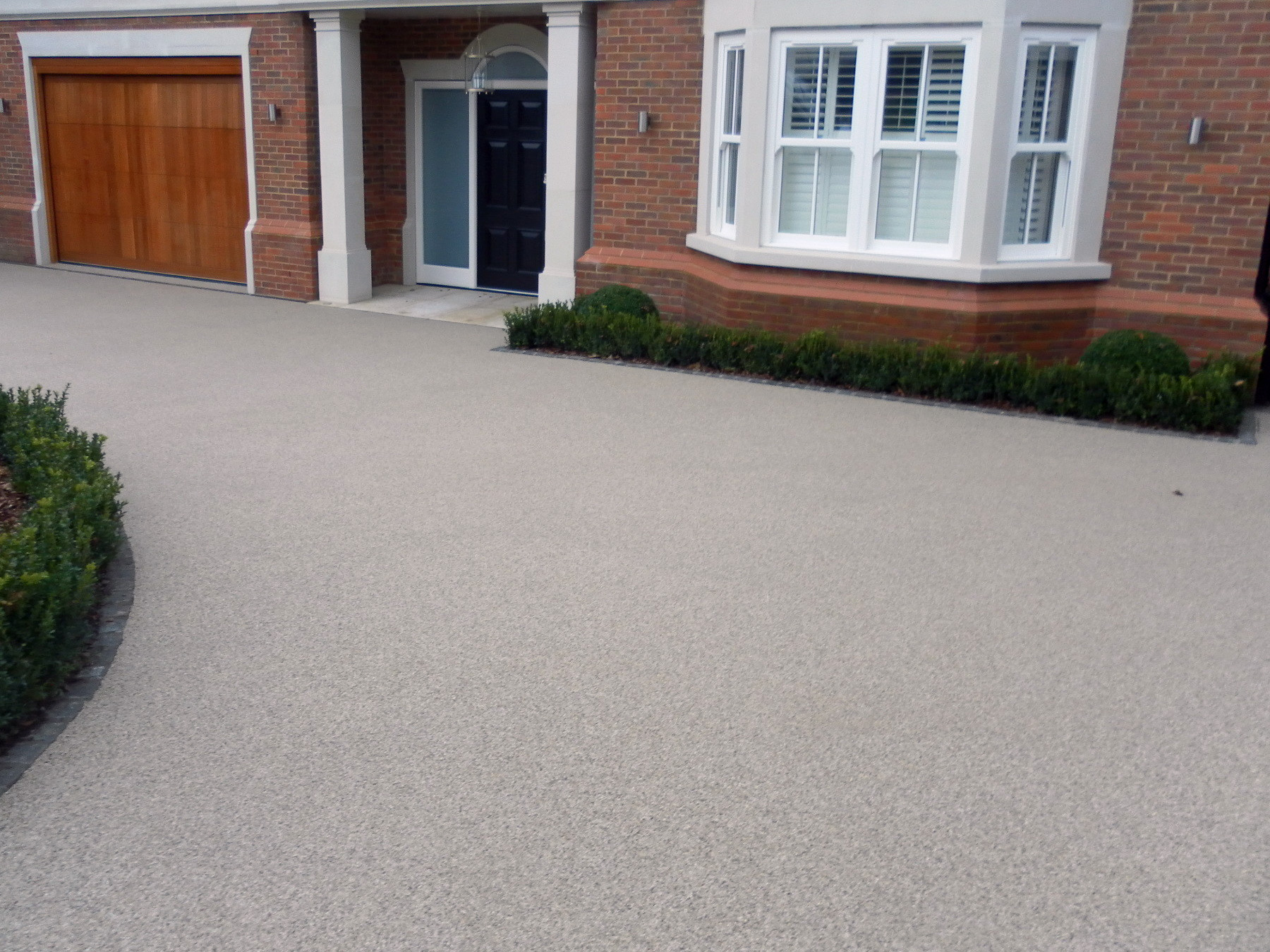
What’s The Purpose of Pervious Concrete?
The purpose of pervious concrete is as a paving material which allows water to drain through it. By allowing water to seep into the ground, porous concrete helps replenish groundwater and reduce storm-water runoff.
When water drains through the concrete, it naturally filters itself. This helps eliminate hydrocarbons from the water.
Does Pervious Concrete Clog?
Any type of drainage can potential clog which include pervious concrete. It’s structure is very porous with lots of voids where water can drain. Along with that water can be dirt and materials that can clog pores. However with a good design and cleanings clogging isn’t usually an issue.
Site design is very important. I recommend planting trees and other landscaping that won’t shed leaves that can clog pores.
Avoid landscaping with lots of small rocks. Tiny rocks can lodge themselves inside the pavements pores.
Can You Pump Pervious Concrete?
No. Because the concrete mix ration contains no slump and very little water it can’t be pumped like regular concrete. It’s recommended that you pour it in place using a chute.
One of the reasons this mix is so much harder to work with is the lack of water. When material is too dry it’s harder to move around and pour. Adding water will mess up the mix ratio so you have to work with it very dry.
Summary: What Is Pervious Concrete?
Pervious concrete is just like regular paving material except that it contains 15% to 35% of open space. Most standard concrete is less than 2% open space. This allows it to drain water much easier than a regular solid concrete slab. Like traditional concrete, its made by mixing cement and stone with water. However, it contains little to no sand. The result in a very porous open-cell structure that allows water to drain through.
Its used for paving and not structural applications like footings and foundations. This is because all those open voids reduce the compressive strength of concrete. However it’s still strong enough to be used as pavement.
Pervious concrete can take in storm-water at a rate of 3 to 5 gallons per minute per square foot of surface area. This is much higher than black top or solid concrete and exceeds the flow rate needed to prevent runoff from heavy rain. In areas prone to flooding or with poor drainage it can be a huge benefit.
Rainwater that drains through the concrete can percolate into the underlying soil or be diverted away with pipes or gravel. Because the pavement acts as a water collection area, it helps prevent much of the polluted runoff that normally occurs with impervious pavements like tar or concrete covered roadways.
When water is run through the concrete it acts as a filtering process. As the water makes its way through the cell structure of the pavement, aerobic bacteria inside the voids help break down pollutants and chemicals. This process can help purify water before it enters the soil.
If you have any questions about concrete, email any time.

John Mazzuca | About | More Posts |
Custom Home Builder
John Mazzuca is a custom home designer and builder at Gambrick with over 25 years experience in the construction industry. John has designed, built and/or remodeled hundreds of homes, small buildings, and commercial projects. He writes about business, real estate, home building, and household electronics. His work has been featured in Fox Business, Better Homes & Garden, House Beautiful, and more.








